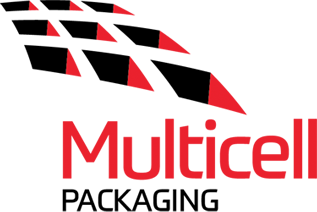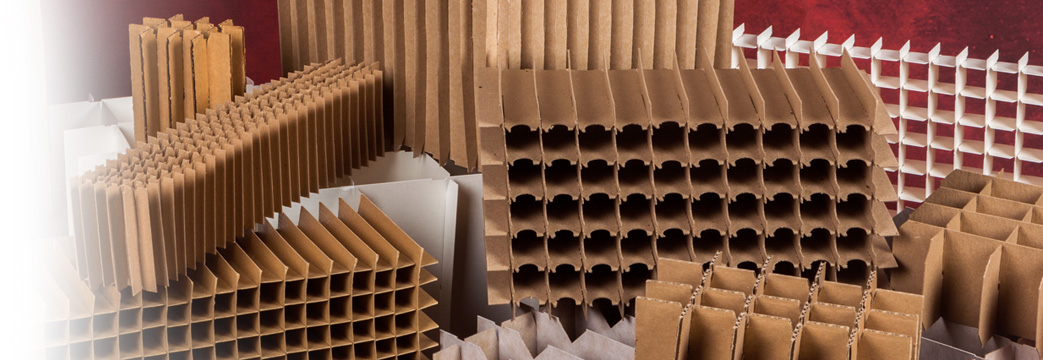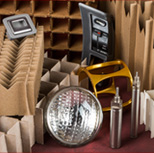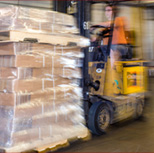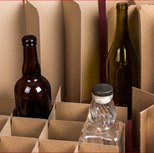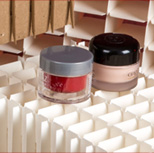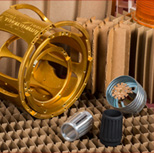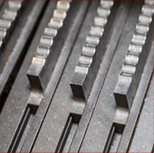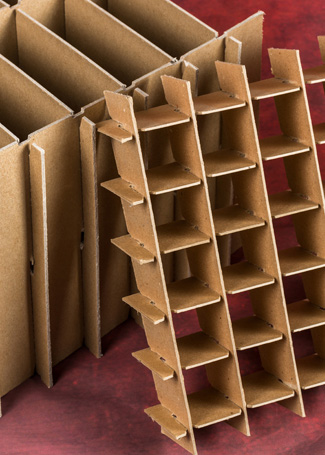Basic Partition Information
Chipboard: is the common term for a solid fiber paperboard. It has many variances in color, thickness and size. It is generally composed of mixed waste papers, and for the most part fully recyclable, making it and environmentally friendly partition option. An example of chipboard is the backing that you will find on most lined paper tablets.
Corrugated: is the common term for the materials used in shipping boxes and containers. It is typically made up of two liner sheets of kraft paper with a fluting layer in between.
Air Cells: are cells at the end of a partition that are not used to hold product. The main function of air cells is to provide a protective cushion between the product and the walls of the boxes.
Arrangement: Refers to the layout of cells in order of length then width. An example of arrangement would be 4x3 — 4 cells in the long direction (length) by 3 cells in the short direction (width).
Box ID: refers to the interior dimensions of the box — length x width x height. There is generally an allowance between the box ID and the overall size of the partition, typically 1/8".
Manufacturing Tolerances: Industry standard tolerances are +/- 1/16" for chipboard partitions and corrugated partitions are +/- 1/8" for length, width and height. Board thickness tolerance is +/- 5% of board caliper.
Caliper: is the thickness of the chipboard expressed in 1/1000 of an inch. It is written as a decimal of an inch. For example a board with a caliper thickness of .030- is 30 1/1000 of an inch thick. It can also be referred to as “30 point”.
